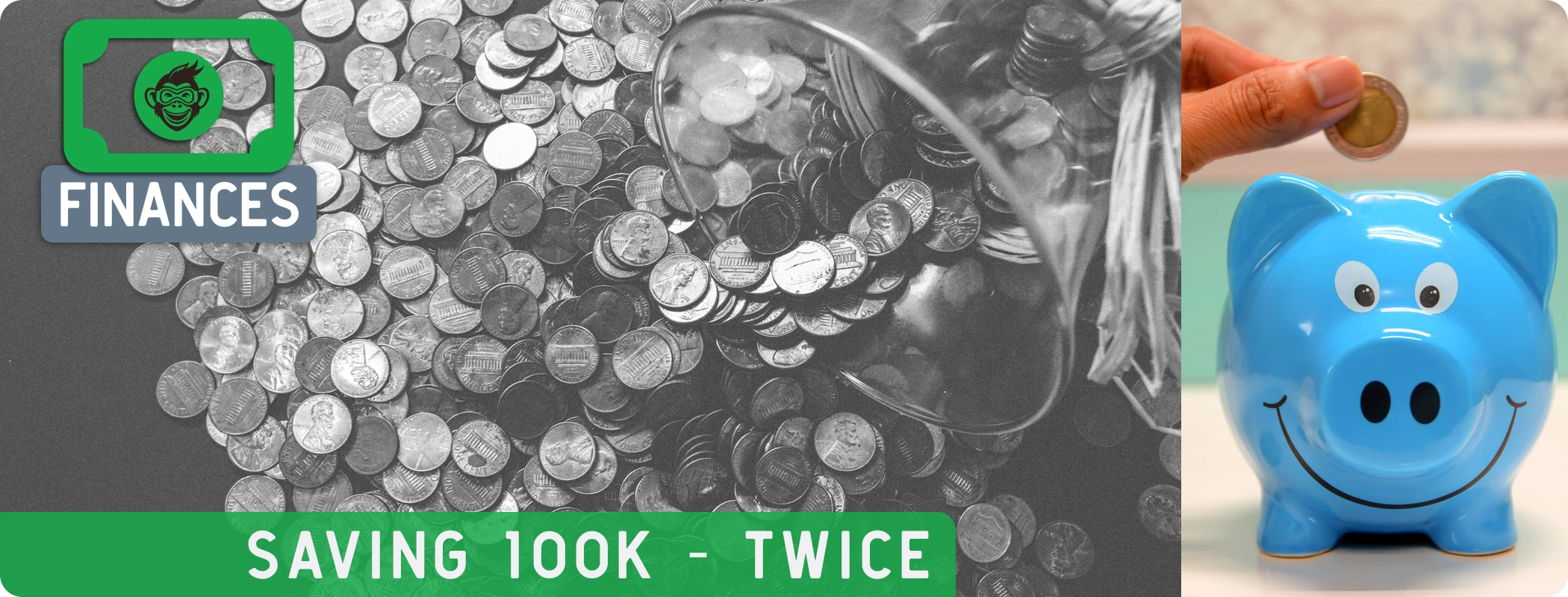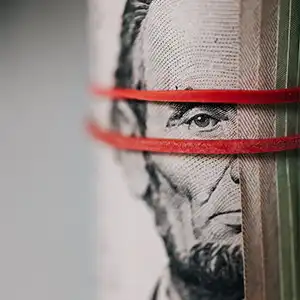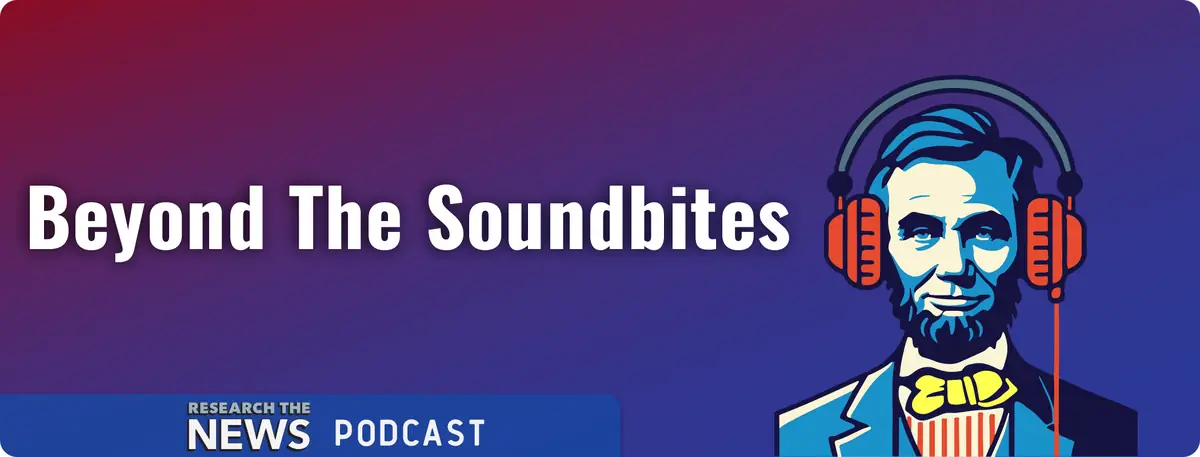
Broker Saving $100K (Twice) Before You Turn 30
This is another article in our finance series, creatively titled “Broker”, with an article about saving cash. We have a lot of humor and sports on the site, but we want to help people be better at life. Read on to find out how to plan for the future - it may not sound fun, but once you do it life becomes better.
In May 2015, at the age of 22, I decided that I wanted to save $100,000 in cash or liquid assets and another $100,000 in retirement accounts before I reached the age of 30. At this time, I had roughly $15,000 in cash and $6,000 saved in retirement accounts split between a 401(k) and a Roth IRA. These savings goals took commitment, sacrifice and a long-term mind set to achieve.
In reality, my savings goal started as soon as I entered college and started working part time for a bank. This was a night shift position, and while it had a negative impact on my social life during my freshman year of college I believed that the job experience, plus the employer provided tuition assistance of $5,000, would outweigh being unable to party on Friday nights. Being in school, it was easy to spend the little bit of money I was making on parties or extra food, but I was determined not to.
The thought was simple, I cannot spend money that I do not have access to. So every pay check, I transferred money to my savings account, then once $1,000 had accumulated, I would buy a 12 month CD. While the returns were more favorable in 2005 for CDs, I appreciated more the fact that these funds were now blocked for the next 12 months. Every three or four months I would save up $1,000 and roll it into a new CD.
I continued to work part time throughout college and in 2014 online banking had replaced my need for CD purchases; however, the end goal was the same. When I first signed up, my online account was paying a return of 5%. The money was sent to an account which took two days to clear and in order to withdraw from these accounts, there would be a two or three day lag period before the funds were transferred to my checking account. Again, this taught me discipline and to think before making any larger purchases.

I began investing in stocks in January 2016 and quickly lost over $6,000 as the market dropped 55% through the first three months. However, I kept slowly putting money into the market and by the time the market rebounded two months later I was up almost $4,000 on the year (or a swing of $10,000). While this was ongoing, I graduated from college with an MBA in finance (continuing straight through from undergrad), and upon graduation moved back in with my parents. My first position required me to travel out of town every week or every other week. My starting salary was around $50,000 and with almost no expenses (all expenses paid by work when traveling), compounded with a rebound in the stock market, my “cash / liquid” savings reached $29,000.
With the collapse of the housing market and the first-time home buyers tax credit, in September 2016, I was able to purchase a three bedroom house in a high rent area. I lived on a budget that allowed me to barely afford the house on my own. However, I lived with two roommates and used their monthly payments to start chipping away at the remaining $30,000 in student loans that I had left.
In July 2017, my grandmother passed away and I received $10,000 from the sale of her house. I invested this money through a friend of my older brother in a “get rich quick scheme” and eventually the money was stolen and the investment opportunity was never real. While the sting of the loss of $10,000 for a 25 year old (or really at any age) hurt, it ultimately taught me a very valuable lesson in investing, that nothing was going to be easy or quick. Also, not to rely on other people but instead verify and research every opportunity on your own while having an exit strategy. While I pushed to file criminal charges in an effort to at least get a tax write-off of the lost, due to the fact that I was kept in the dark during the initial investment discussions, I did not have any evidence to pursue the charges and eventually accepted a complete loss of the money.
During the next few months through March 2018, I aggressively chipped away at my student loans while slowly replenishing my savings account. By the end of March, I had about $5,000 of low interest rate student loan debt remaining. I also had roughly $26,000 in savings with an additional $30,000 saved between my Roth IRA and company match 401(k). At this point, I only paid the student loan minimum and focused on aggressive savings and investing. Through the years of locking away cash in hard to access accounts, I had engrained in my mind the self-discipline of not purchasing things that were not needed.

At this point, I made the change that had the largest impact on my financial life. You see articles all of the time that advise to cut spending and make a budget. My question was, “but then what?”. To help answer that question, I started tracking every single purchase and expense in an excel spreadsheet. I not only realized how quickly those “little purchases” add up, but also discovered that every month there are big “one-time” expenses, so if they occur every single month, are they really “one-time”? More importantly this year, I opened up a third account with my bank. I had my checking account (which I used as every day spending), my expense account (which was to cover all bills and other expenses) and my savings account. I made a budget that allowed me to spend $400 a month on food and entertainment. Therefore, every paycheck, I would take my checking account down to $200 (or half of the $400 allowance for spending), move enough to cover half of the monthly bills to my expense account and the remaining to my savings. This way I was forcing myself to save and only allowing myself to spend what was budgeted, or even less. If I did not spend the entire $200, the checking account would remain only at $200 which allowed for even more savings. In other words, set your spending, not your savings and then try to underspend which will result in increased savings if the money is transferred out of the checking account.
By December 2011, with the help of a work bonus, my savings account was to $43,000 and my retirement accounts combined to $37,000. Over 2019, I continued to invest small amounts in stocks and stock funds. In October 2012, I paid off the remaining $4,000 in student loans and with the help of a stock market that increased over 10% year over year, my savings had increased to $60,000 in cash / stocks with an additional $56,000 in retirement accounts. For most of 2020, I just let my funds sit in investment accounts and rode the 20% increase in the stock market. I realized during 2020 that I was terrible at picking individual stocks and focused more on total market funds. I also only now realized that I was paying almost a 6% loading fee on my Roth IRA that I had through years with my bank. I switched this along with the majority of my other investments to Vanguard in an effort to take advantage of their lower cost structure. By the end of 2013, my savings had increased to $70,000 in cash / stocks with an additional $82,000 in retirement accounts.
I had two years to save another $30,000 and split the goal to save $15,000 in both 2021 and 2022. With two roommates paying $1,100 a month, a stock market that was up 9.3% was able to put away another $20,000 in 2021. I maxed out my Roth IRA and increased my 401(k) to 8% which resulted in my retirement accounts increasing to $129,000. I had hit my retirement account savings goal and the cash goal was in sight. With the continued focus of the past, my retirement accounts continued to grow to $152,000 and my cash accounts increased to $113,000. The seemingly distant goal had been reached.
To summarize, invest early in low cost accounts. Despite the ups and downs in the market from May 2015 through 2022, my return on stock market investments was $54,000 or roughly 20% of the total amount I had saved at this point. It is important to be disciplined in your spending, do not make impulse purchases and know what you are actually spending your money on each day. Lastly, set a budget and force yourself to stick to it by setting your spending (not your savings amount) and sticking to the budget. There were several times that I passed on going out because “I had no money”. Despite the fact that my savings account was fine, I would not touch it for entertainment or other small purchases. If you make saving and managing finances a priority, you will be amazed at how quickly you realize to cut excess expenses and begin to build a solid financial foundation.
About the Author

Warren
Warren is our resident financial guru, but his identity is a secret.
Share This Article
 Check These Out
Check These Out
Content not available. Please disable site blocker to view.
About Stray Monkey
Stray Monkey is your source for entertainment, travel, and lifestyle content that's a little off the beaten path.
Learn more about us








